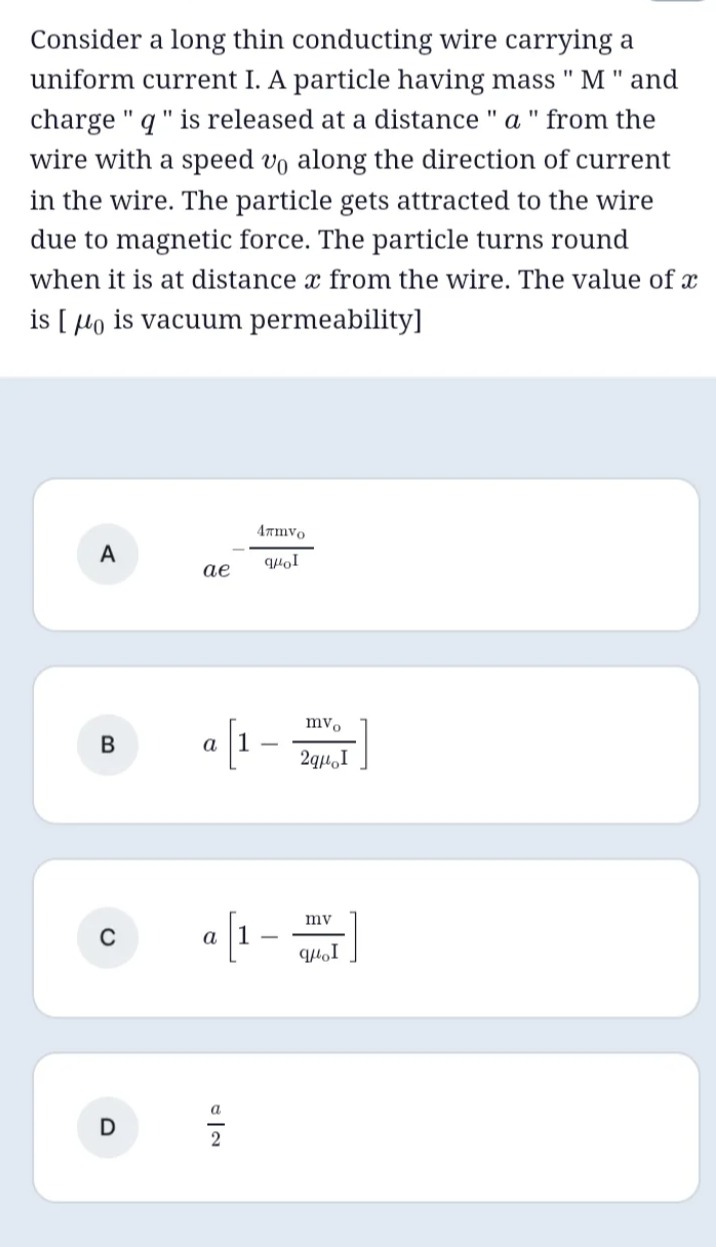Question
Question: Consider a long thin conducting wire carrying a uniform current I. A particle having mass " M " and ...
Consider a long thin conducting wire carrying a uniform current I. A particle having mass " M " and charge "q" is released at a distance " a " from the wire with a speed v0 along the direction of current in the wire. The particle gets attracted to the wire due to magnetic force. The particle turns round when it is at distance x from the wire. The value of x is [μ0 is vacuum permeability]

ae−qμ0I4πmv0
a[1−2qμ0Imv0]
a[1−qμ0Imv]
2a
A ae−qμ0I4πmv0
Solution
We work in cylindrical coordinates. Choose the vector potential in the gauge
A₋z = –(μ₀I)/(2π) ln r
so that B = (μ₀I)/(2πr) φ̂. Then the Lagrangian is
L = ½ m (ṙ² + ż²) – q (μ₀I)/(2π) ln(r) ż.
Since z is a cyclic coordinate, its canonical momentum
p_z = m ż – q (μ₀I)/(2π) ln r (1)
is constant. At t = 0 the particle is at r = a with ż = v₀ so that
p_z = m v₀ – q (μ₀I)/(2π) ln(a).
When the particle “turns round” (i.e. when its z–velocity reverses) we have ż = –v₀ and r = x so that
p_z = – m v₀ – q (μ₀I)/(2π) ln(x).
Equate the two expressions for p_z from (1):
m v₀ – q (μ₀I)/(2π) ln(a) = – m v₀ – q (μ₀I)/(2π) ln(x).
Solving for ln(x):
m v₀ + m v₀ = – q (μ₀I)/(2π)[ln(x) – ln(a)] ⇒ 2m v₀ = – q (μ₀I)/(2π) ln(x/a) ⇒ ln(x/a) = – (4π m v₀)/(q μ₀I).
Thus,
x = a exp[ –(4π m v₀)/(q μ₀I) ].
This matches option (A).
